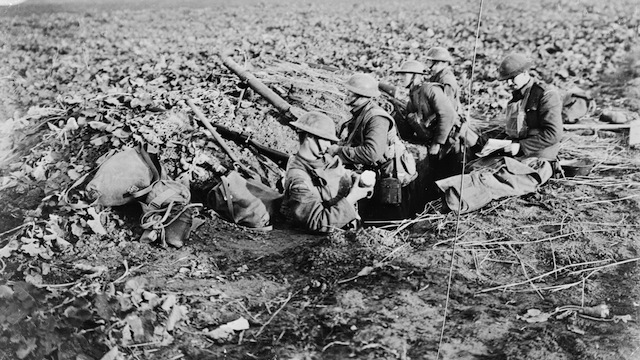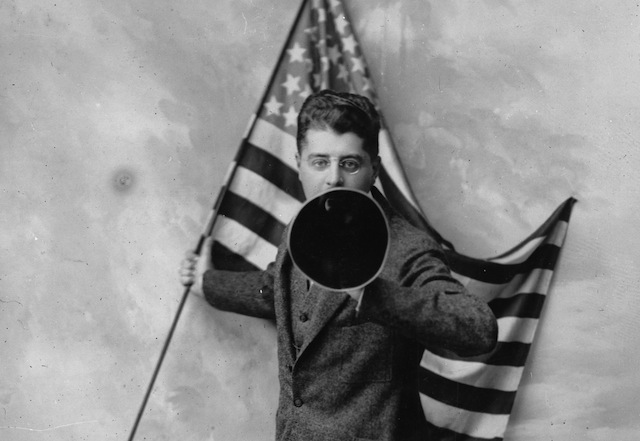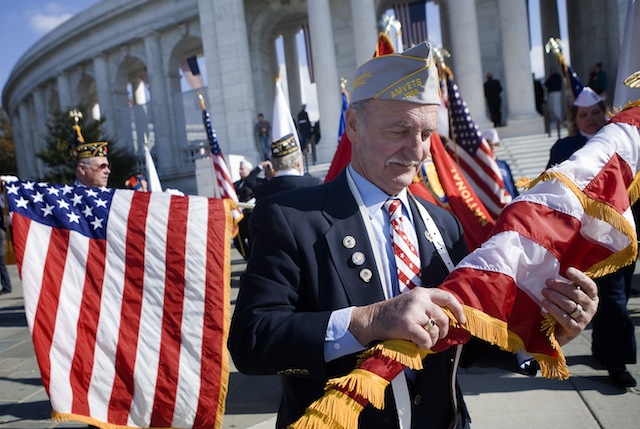
Soldier sit in their trench anxiously awaiting the end of WWI. (Getty)
Veterans Day is a holiday with many names and dating back for decades.
Celebrate your Veterans Day weekend with a trip back through the great holiday, its traditions, and its history.
Here’s what you need to know.
1. Armistice Day Was Declared November 11, 1919

The Voice of America announces the end of the war. (Getty)
World War I, or The Great War, ended on the 11th hour of the 11th day of the 11th month in 1918. Around 40 million people were killed worldwide when the greatest military powers of the era clashed, using new and devastating technology. When the war finally came to an end, nations across the world dedicated holidays to commemorate the service men and women who fought and died in battle.
Thus, on November 11, 1919, President Woodrow Wilson declared the first Armistice day in honor of the end of the war. He said:
To us in America, the reflections of Armistice Day will be filled with solemn pride in the heroism of those who died in the country’s service and with gratitude for the victory, both because of the thing from which it has freed us and because of the opportunity it has given America to show her sympathy with peace and justice in the councils of the nations.
2. A 1926 Congressional Act Declared ‘Armistice’ Day

Former President Woodrow Wilson on Armistice Day 1923. (Getty)
On June 4, 1926, Congress officially recognized the end of The Great War and established a reoccurring holiday to commemorate the anniversary of the war.
Congress declared:
Whereas the 11th of November 1918, marked the cessation of the most destructive, sanguinary, and far reaching war in human annals and the resumption by the people of the United States of peaceful relations with other nations, which we hope may never again be severed, and
Whereas it is fitting that the recurring anniversary of this date should be commemorated with thanksgiving and prayer and exercises designed to perpetuate peace through good will and mutual understanding between nations; and
Whereas the legislatures of twenty-seven of our States have already declared November 11 to be a legal holiday: Therefore be it Resolved by the Senate (the House of Representatives concurring), that the President of the United States is requested to issue a proclamation calling upon the officials to display the flag of the United States on all Government buildings on November 11 and inviting the people of the United States to observe the day in schools and churches, or other suitable places, with appropriate ceremonies of friendly relations with all other peoples.
3. A Federal Holiday Was Established in 1938

On May 13, 1938, just as the world was preparing to hurl itself into another catastrophic world war, Congress added November 11 to the roster of other national holidays with bill 52 Stat. 351; 5 U. S. Code, Sec. 87a. You can read the full text of the bill below:
4. Because of Korea, Armistice Became Veterans Day in 1954

After the United States saw one of its biggest military mobilizations in history, President Eisenhower endorsed the plan to change the name of November 11 from Armistice Day to Veterans Day in order to honor all veterans of any war who had served the United States. Unlike Memorial Day, Veterans Day honors both the living and the lost.
Here is the official proclamation sent from Eisenhower to the Office of Veterans Affairs declaring the holiday:
Here is the official presidential proclamation that created Veterans Day:
5. Every Year Veterans Are Honored at Their Memorials

Parades for Veterans Day have occurred and will continue occur in cities and towns across the Untied States. The largest of these parades, “America’s Parade,” will happen in New York City and will move up Fifth Avenue from Madison Square Park starting at 11:25 a.m. after 11 a.m. speeches honoring the holiday’s roots as Armistice day.